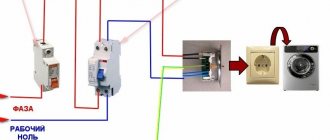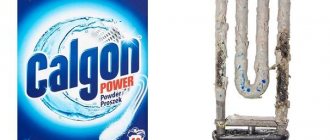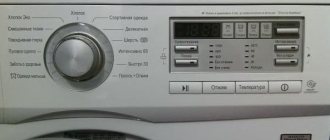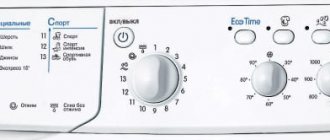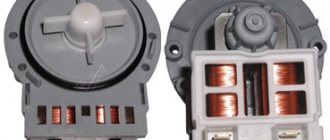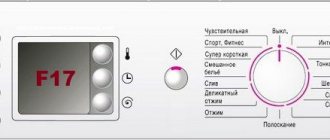Many people ask why do we need a voltage stabilizer for a washing machine? Have you ever noticed how a light bulb blinks or the radio crackles from time to time in your home or office? This is the surest sign that the current state of electrical networks in our state leaves much to be desired. For the energy sector, deviations from the rated voltage of 220V have long become the norm. Moreover, in some cases, no one pays attention to even the “allowed” deviation of 10–15% from the norm.
Surely each of you has heard a story about how all the household appliances in the house burned out due to a sudden power surge. The way out of this situation is very simple. The only solution is to purchase and install a household voltage equalizer in the room. A voltage stabilizer for a washing machine, computer, boiler and other equipment, of course, if it is chosen correctly, can protect your equipment from sudden power surges in the network.
Why do you need a stabilizer for a washing machine?
However, unlike the electromechanical control used in machines of the 90s, the electronics of modern washing units are very sensitive to voltage drops in the 220V/230V network. In the event of voltage fluctuations, the programmer may malfunction, the hatch lock may fail to operate (activated after 4–5 attempts), unstable operation of the drain pump, and an increase in the washing time of the unit.
When the voltage in the network “sags,” some models turn off; the electronic components of LG and Electrolux are especially sensitive to it; they do not work at a voltage of less than 180 V. Operating the machine at extremely low parameter values is no less dangerous than with overvoltage. At low speeds, the engine overheats, and in the event of a complete stop, it burns out from a large amplitude current in the rotor or stator windings. When the voltage goes off scale to 243–245 V, the electronic control module of most washing machines fails.
Resanta ASN-12000/1-C
Relay single-phase floor stabilizer, capable of equalizing current in the range from 140V to 260V, and outputting 202-238V. “Responds” to voltage surges within 7ms, while the correction accuracy reaches 8%. The system also provides a “Bypass”, which is needed for safer operation of the device in transit mode. The user will also be pleased with the high total power of 12 kV A. There is a voltmeter on the front panel of the stabilizer, with which the voltage at the input and output is monitored. The output signal is supplied in the “correct” form, which increases the efficiency of the device. By the way, the efficiency of the transformer reaches 97%.
The most effective are stabilizers with an efficiency of 97%.
As for safety, Resanta is protected from short circuits, overheating, overvoltage and interference. There is also forced cooling, which allows you to quickly and efficiently remove heat from the heating elements of the system. Due to the ventilation provided, the device can be used at temperatures from 0 to 45 degrees and at humidity up to 80%.
Choice
Cases of breakdowns of complex household appliances due to poor quality household power supply are not uncommon today.
Breakdowns of washing machines and other household appliances due to changes in the supply voltage in the network are not considered service cases, so the owners carry out repairs to the SBT at their own expense. Taking this into account, you should take readings of the mains voltage in a private house or apartment. It is better to take measurements 5–6 times a day during peak loads during the day and, after turning off most consumers, at night.
If the values fall outside the range of 180–242 V, you will need to stabilize the voltage by selecting the correct electrical appliance. Voltage equalizers for washing machines, called stabilizers, differ in design. They come in relay type, ferroresonant type, step type and servo type.
Each 220 V version differs in operating principle and technical characteristics. As product items, they have different consumer properties and occupy their own price niche in the segment of electrical products.
Relay
Represents an autotransformer with several taps from the winding, a power relay and a control board. First, the input voltage is measured and, depending on its value, the control board sends a voltage boost control signal to the corresponding relay. The relay contacts connect certain groups of turns of the secondary winding. Relay stabilizers allow you to obtain an undistorted sinusoidal current, most suitable for the operation of an electric motor. Stabilizes input voltage 220 ± 15 V with an error of 5–8%.
Ferroresonant
The ferroresonant stabilizer uses a nonlinear inductor, at the terminals of which a stabilized voltage is obtained with a high accuracy of 1–3%.
The disadvantage of this type is considered to be high noise and the dependence of the quality of stabilization on the size of the connected load. Today they are mainly used to power electrical receivers in industry.
Stepped
Step stabilizers are voltage equalizers with electronic switching of autotransformer windings. They are similar in principle to relay ones, only the taps of the autotransformer are connected using thyristors and triacs. The absence of parts with mechanical wear made it possible to extend the service life of the step stabilizer compared to its relay analogue. Protection in the latest modifications is carried out with stabilization accuracy 220V+2V/-3V.
Electromechanical (servo-drive)
The electromechanical device uses an autotransformer with a sliding contact, the movement of which along the winding is carried out by a servo drive. Regulation is carried out using a simple control board. The advantage of electromechanical voltage equalizers is the acceptable voltage accuracy at the output terminals. Servo-drive devices are capable of providing protection for electrical receivers in the range of 6–7%.
Power outages
Nowadays, when network indicators “jump” or disappear altogether, it is necessary to protect your home appliances from these troubles. And if an uninterruptible power supply (UPS, or uninterruptible power supply) helps during outages, then only a stabilizer can save you from voltage “surges” and “dips.” First of all, the washing machine's electric motor, which rotates the drum, is at risk.
Electric motor at risk
If there is not enough voltage, the engine torque decreases sharply. It cannot reach operating speeds and remains in the so-called starting mode for a long time. The latter is characterized by increased current consumed from the network (3-5 times more) and motor overheating. For effective cooling, the electric motor needs to quickly reach its rated speed, and this is not possible at low voltage. The result is winding overheating, insulation failure and failure (and it’s good if there is no fire!). As the voltage increases, the heating of the engine also increases, and the standard cooling system can no longer cope with it.
New product from a well-known company
To some extent, the innovative Volt Control system, which is equipped with Samsung products, can solve the problem of differences. But this system is not omnipotent. The price of this product is higher than that of other companies. But what if you have a washing machine of another brand: LG, Electrolux, Bosch, Siemens? There is only one answer: protect your home “helper” with a stabilizer.
Stabilizer power for washing machine
The main power consumption of the washing unit comes from the heating element and the electric motor. The energy consumption of the heating element at the initial moment of heating the thermoelement increases, and the electric motor, when starting, consumes 3 times the rated current. When choosing a stabilizer, the increased power at start should be taken into account in the form of a 20% increase in the rated power indicated on the sticker. Also, knowing the maximum voltage deviation in a household network, the resulting value should be multiplied by the power adjustment factor determined from the table on the Internet.
Example of total power calculation
It is important when choosing a device to correctly calculate the power sufficient for stable operation of the machine, without overpaying for excess kilowatts. For example, if you need to connect the washing machine to a network with a voltage drop of up to 160 V, the power adjustment factor of the stabilizer (according to the table) is 1.38. With a rated power of the 2 kW model, 2.0 x 1.38 = 2.76 will be required; taking into account the 20% starting additive, a stabilizer with a power of 2.76 x 1.2 = 3.31 (kW) is suitable.
How to choose the right one
Of course, it is wise to take care of the safety of all household appliances in the house. For this you need a stabilizer of appropriate power. This indicator is the main one when choosing a device.
Stabilizer graph
To find out the required power:
- Determine the total number of devices connected to the network.
- Find information about the power consumption of each device in the instructions and add up the figures.
- Add 20-25% to the resulting value.
Expert opinion
I work in the household appliance repair industry. Extensive experience in restoring washing machines and dishwashers.
Ask a Question
This number will be the required power, which you need to focus on when purchasing a stabilizer in order to ensure uninterrupted operation of the home appliance system.
It is also worth considering such a parameter as the number of phases, depending on the type of electrical network directly in your home. This information can be found on the meter. Single-phase networks are most common.
But there are exceptions for which you will need to buy a three-phase stabilizer. Installing an automatic residual current device (RCD) will increase the level of security in the system.
Popular models
The top 5 includes stabilizers of varying power, including those for household use, from the following brands:
- APC.
- RUCELF.
- DEFENDER.
- LIDER.
- RESANTA.
Weak electronic control boards for washing machines can malfunction even from short-term interference and lightning impulses induced in the network. Installing a difavtomat or RCD in the power line on the electrical panel does not save you from voltage surges, and the built-in network filters of the machine power supplies smooth out only small voltage surges.
If the alternating voltage value is more than 242 V, the controller or electronic components of the board are likely to fail.
This applies equally to both the budget Indesit model and the expensive Mielle. There are no fuses or means of protecting electronics from voltage surges in existing models of washing machines. The voltage control system, which is equipped with some models, will only turn off the unit and inform the user about the problem. A voltage stabilizer connected between the network and the washing machine completely restores the operation of a household device.
Hazardous factors of the electrical network
Stabilizers for washing machines must be used taking into account certain features:
- high voltage may remain in the network for a long time, accidents and phase imbalances occur,
- sometimes the network is overloaded and experiences low voltage levels,
- Sometimes high voltage levels occur for a short time. This factor is associated with neutral malfunctions,
- sudden changes occur temporarily, the range of which is 120 - 300 V. They are caused by connecting welding machines and other powerful devices,
- thunderstorms during which there is no working lightning protection at the facilities.


